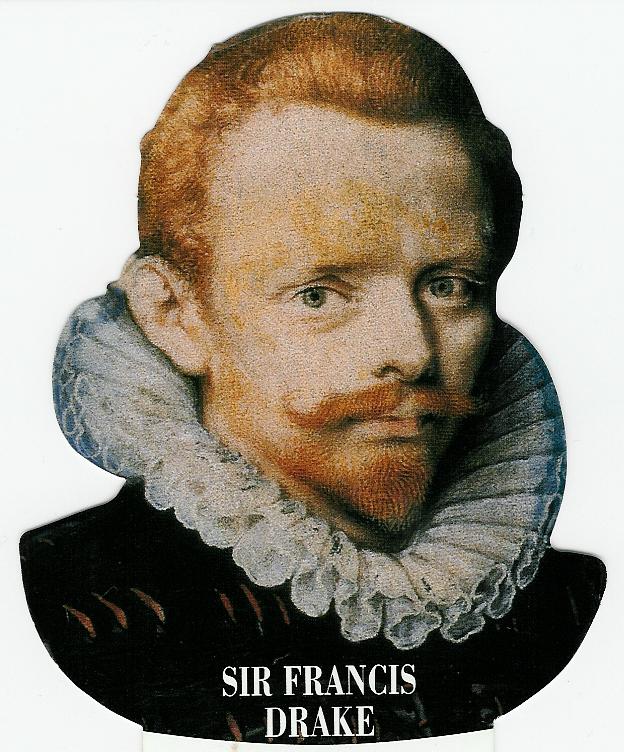



Sir Francis Drake

Sir Francis Drake
b. 1540 Devonshire,
England d. 1596 off the Panama Coast
At
age 12, Drake went to sea in the service of a seasoned sailor
(a sailor who has
been to sea many times)
who traded in the ports of
France
and
Holland,
and when the old man died he left his boat to the boy. In his twenties, Drake
hooked up with his distant cousin, Admiral John Hawkins; in 1567, they left
Plymouth
together on a slave-trading expedition and stopped first at Cape Vere in
Africa,
where they and about 50 crew members went ashore with dogs to hunt for
tribesmen. Finding but a few, they made straight for
Guinea,
succeeded in buying 200 prospective
(possible)
slaves, and then sailed clear across to
Mexico
with human cargo. Spaniards attacked their ships with vigor
(intense force)
off the port of
Veracruz,
managing to sink all but two. Drake made it back to
England
but paid for his escapades with the loss of almost everything he possessed.
From that moment on, he was driven by hatred for the Spanish, who would come
to call him " the dragon."
His most
famous voyage, undertaken in 1557, had the semi-secret financial backing and
moral support of
Queen Elizabeth I,
who hoped that his activities in the Pacific would result in ending the
Spanish monopoly
(total
control) of the trade there. Sailing west, he rounded the continent of
South America
on the Golden
Hind and continued up the coast, ransacking Spanish galleons, including
the treasure-heavy Cacafuego.
With
unfavorable winds preventing him from sailing directly home across the
Pacific, he strayed as far north as
California
and called the territory "New Albion"
(Albion being a
poetic name for
England),
claiming it in the name of his queen. From there he crossed not only the
Pacific
but the
Indian
oceans and sailed around the tip of
Africa
into the
Atlantic.
In November 1580, almost three years after setting out and "literally
ballasted
(filled) with
silver," the Golden Hind reached port in
England.
When war with
Spain
broke out in 1585, Drake outdid himself, decimating
(destroying)
so
many Spanish vessels that the great
Armada
had to be postponed
(put off) for an
entire year. He was and remains England's boldest privateer, who set his
country on her ultimate course of empire - to rule the waves "from pine to
palm" the long years through.
Below are links and sites for more information on Sir Francis
Drake.
This site was last updated
08/04/2004 08:08 PM -0400